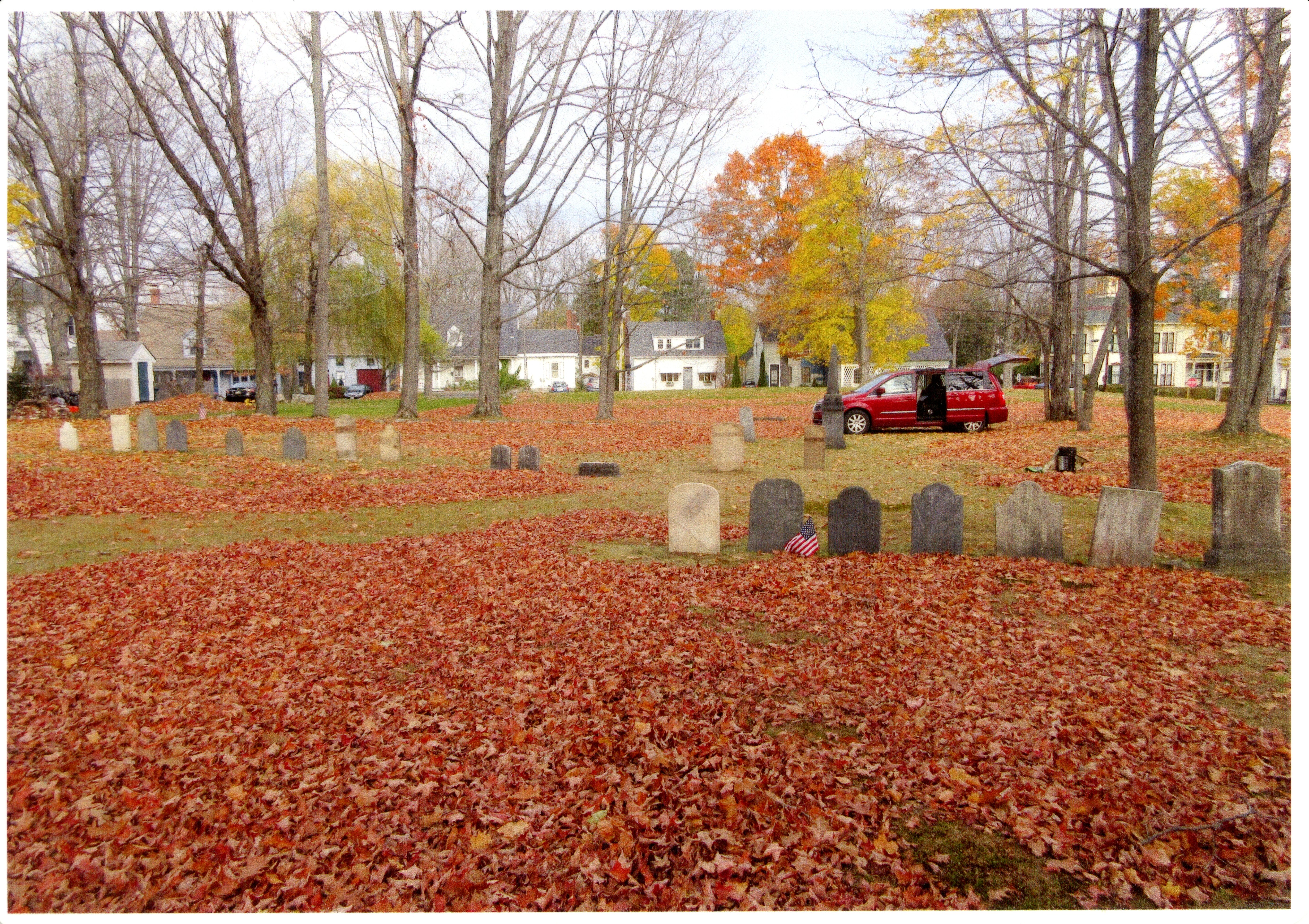Have you recently noticed a “new” cemetery emerging on Dresden Avenue across from the Common? 
What you are actually witnessing is the re-emergence of the oldest identifiable burial ground in Gardiner. With stones dating back to 1791, the “Old Churchyard” actually takes us back to the days when Gardinerston was known as Pittston, Robert Hallowell Gardiner was just a boy, and Revolutionary War General Henry Dearborn lived where the library now stands.

The churchyard was originally consecrated for those who worshiped at St. Ann’s, an Episcopal church established at the behest of Sylvester Gardiner and the first church built in the region. The history of St. Ann’s, itself, is a colorful story…. including fires, a madman, and various re-buildings and alterations (stop by the Community Archives Room for a full account!) Many of Gardiner’s earliest and most influential citizens had close ties to the church, as well as with it’s successor, Christ Church (built in 1820) — and many of them (and their loved ones) were laid to rest in the old churchyard.
The known graves in the churchyard span from 1791 to 1892, with most dating from about 1800 to the 1850s. By the end of the century, however, the old churchyard seemed largely forgotten; in 1890, the Gardiner Home Journal noted “One stone was so sunken that the only part visible was the top bearing an urn and weeping willow with the name “Capt. David Lincoln.” By the turn of the following century, fewer than 10 stones were still standing.

Thanks to a few hardy volunteers (as well as hundreds of hours of labor and a fair amount of research), the churchyard is looking much different today. Bill King, of Bath, had once photographed a row of his ancestors’ stones on a visit to Gardiner, but when he returned years later, he found stones downed, broken, and moved from their proper locations. Thanks to only two photographs known to exist, he and Hank McIntyre have been able to re-place about two dozen stones to date. A few more will be ready to return to their known spaces by next summer.

However, many more stones remain and their proper locations are unknown. In August, Ground Penetrating Radar identified 40 “anomalies,” or likely grave locations for which no stone was standing. That number aligned with the list of graves known to exist in the early 1900s. The exploration even turned up a long-buried (and perfectly preserved) headstone and footstone from 1814.

A trove of over two dozen broken headstones (plus a dozen footstones) still await repair and eventual re-placement, but physical challenges are only part of the concern.


The greatest challenge remains linking the remaining stones to their proper locations. Researching historical and genealogical records has helped to identify many family connections and relationships among the buried, but without any photographic clues it is difficult to know which stone belongs where.
The “planting” season is over for now and this winter will be busy with stone repair and research. In the meantime, we still hope that someone, somewhere, might find an old photograph of the Old Churchyard (even if it’s in the background) before next summer. After all, Maine winters are long and perfect for sifting through old photographs — and any clue might help! If you do find something (or have questions), please contact Dawn at the library (582-6890 or archive@gpl.lib.me.us).

